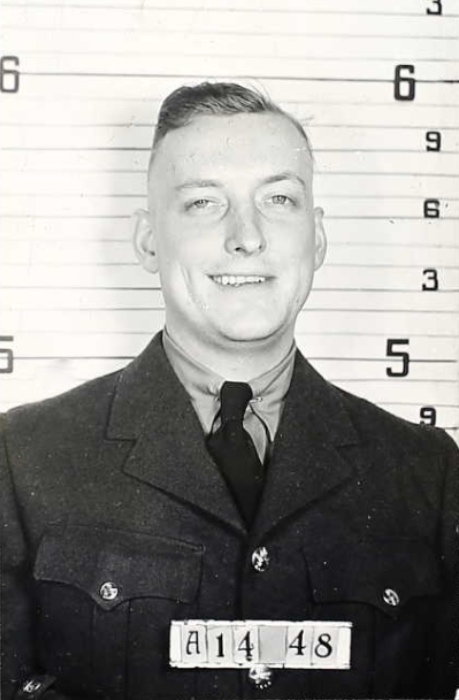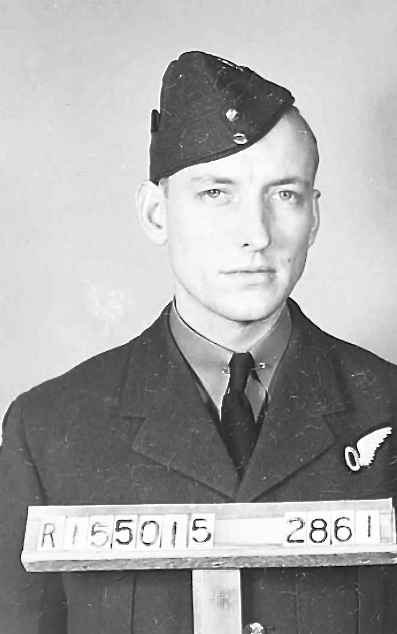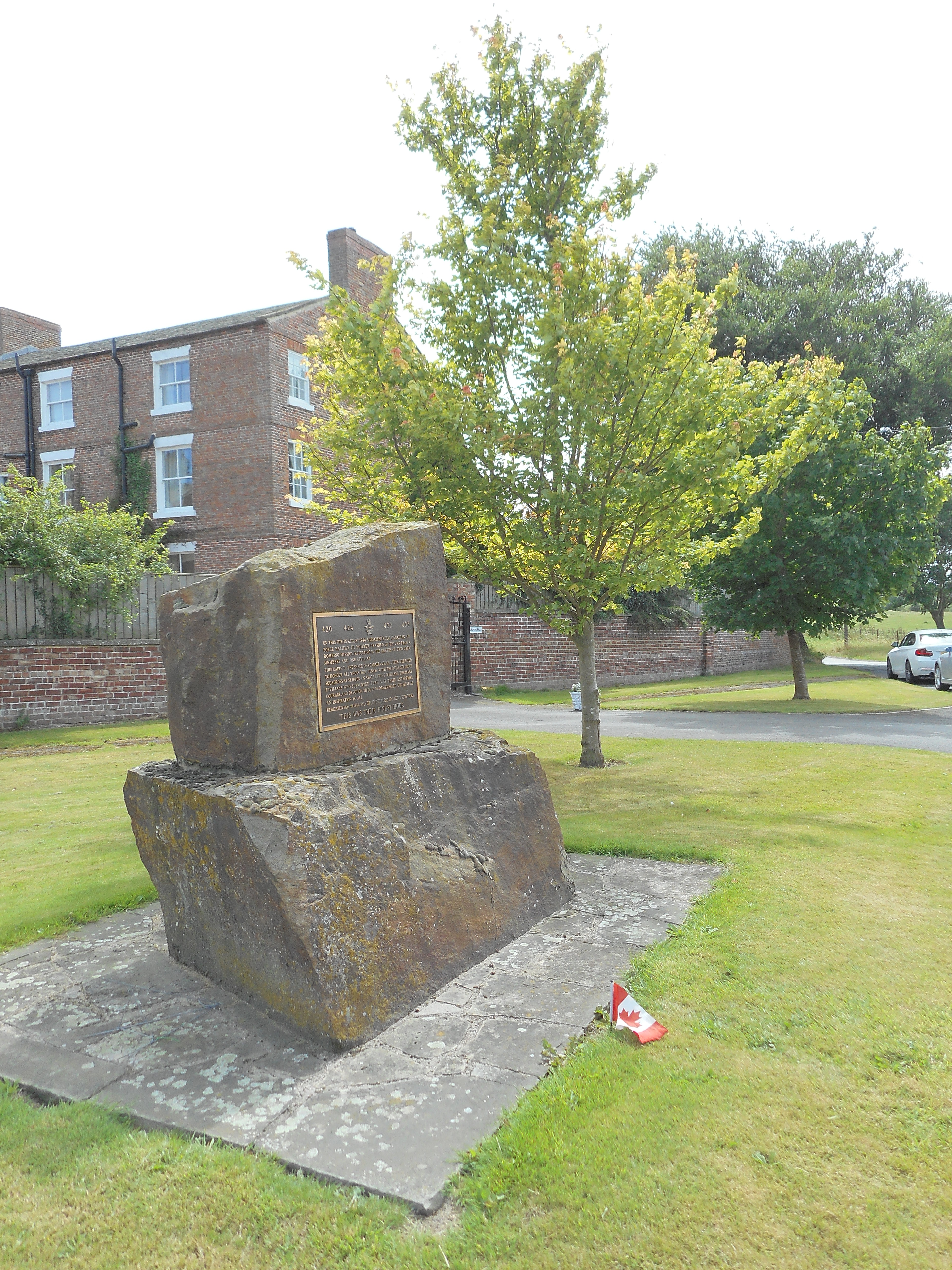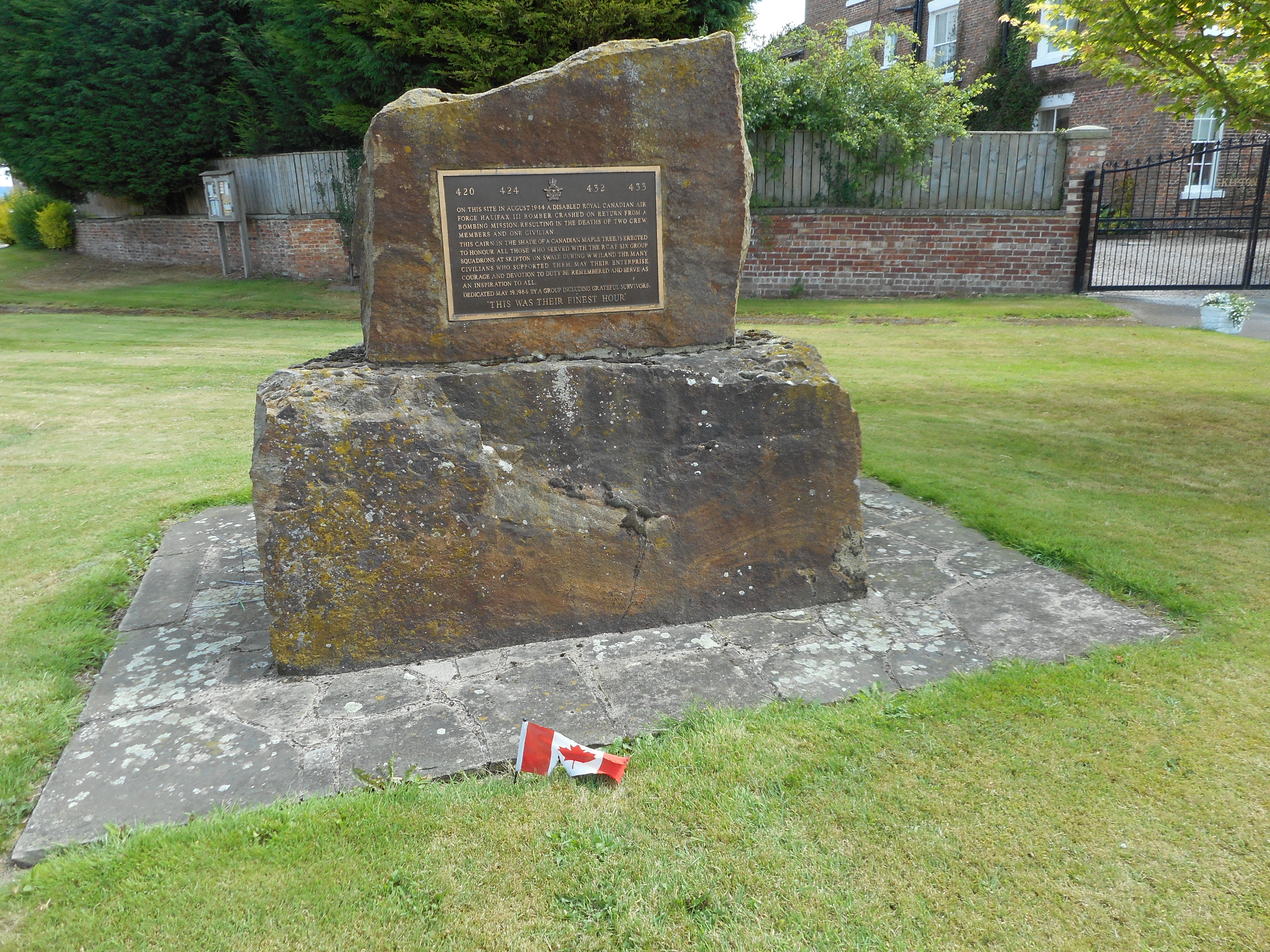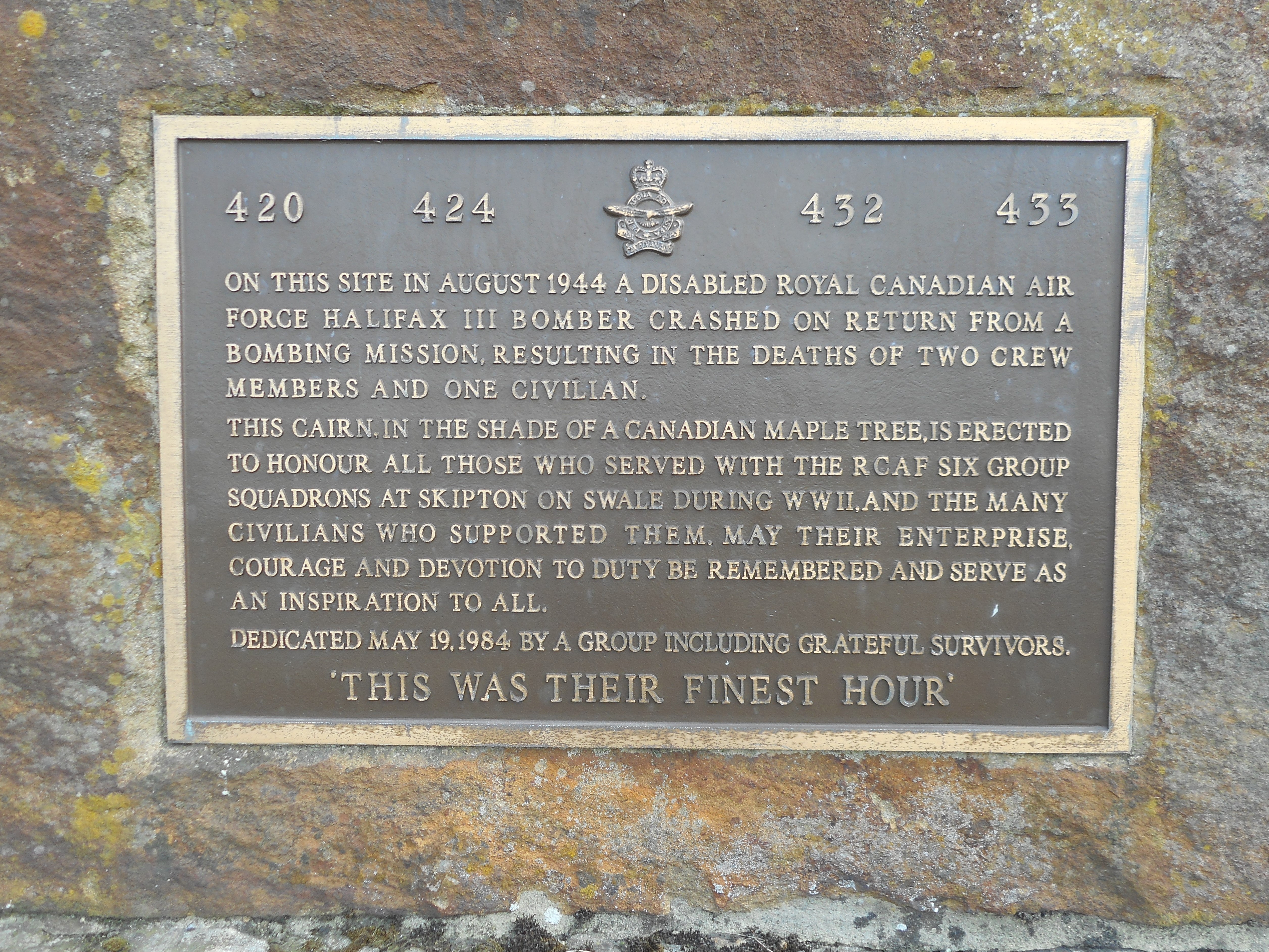Tillmann, William Gerard
Personal Information
| Rank | P/O |
| Forename(s) | William Gerard |
| Surname | Tillmann |
| Gender | M |
| Age | 26 |
| Decorations | |
| Date of Death | 25-03-1944 |
| Next of Kin | Son of William Joseph Tillman and Mary Agnes Tillman (née Coughlin), of London, Ontario, Canada. Husband of Margaret Eleanor Tillman (née Commander), whom he married at Leaside, Ontario on 7 April 1943. |
Aircraft Information
| Aircraft | Handley Page Halifax III |
| Serial Number | LW435 |
| Markings | QB-R |
Memorial Information
| Burial/Memorial Country | Germany |
| Burial/Memorial Place | Reichswald Forest War Cemetery |
| Grave Reference | 12. H. 12. |
| Epitaph |
IBCC Memorial Information
| Phase | 2 |
| Panel Number | 254 |
Enlistment Information
| Service Number | J/88771 |
| Service | Royal Canadian Air Force |
| Group | 6 |
| Squadron | 424 (Tiger) |
| Trade | Air Bomber |
| Country of Origin | Canada |
Other Memorials
| Location | Village Green, Skipton on Swale, North Yorkshire |
| Country | United Kingdom |
| Memorial Type | Memorial Stone, inscribed Metal Plaque & Maple Tree |
| Memorial Text | A memorial to the Canadian personnel who served at RAF Skipton on Swale during WW2, including 424 Sqn RCAF |
Miscellaneous Information
| William was born on 22 January 1918 at London, Ontario. His father was a medical doctor, born at London, Ontario and his mother was born at Mount Carmel, Ontario. The schools he attended were: Sacred Heart Separate school, London, Ontario 1924-1930, St. Michael’s College, Toronto 1930-1932. St. Joseph’s High School, St Thomas, 1932-1935. North Bay College, Ontario 1935-1936 and finally University of Toronto 1939-1940. His sport interests were rugby, badminton and golf, his hobbies the piano and vocal. William worked at Labatt’s Ltd., a brewery in London, Ontario where he was an assistant to the Sales Manager from 1936 onwards. |
| After enlisting on 27 February 1942 and initial training, William was posted to the U.K. arriving on 5 June 1943 at 3 PRC. He was then at 5 AOS on 28 June 1943, 23 OTU 3 August 1943, 61 Base 4 November 1943, 1666 CU 19 November 1943 and 424 Squadron on 23 December 1943. William sadly lost is life from there on 25 March 1944. |
Commonwealth War Graves Commission
The National Archives
| Record of Events (Operational Record Book) AIR 27/1835/4 |
| Summary of Events (Operational Record Book) AIR 27/1835/3 |
Fellow Servicemen
Last Operation Information
| Start Date | 24-03-1944 |
| End Date | 25-03-1944 |
| Takeoff Station | Skipton on Swale |
| Day/Night Raid | Night (1% moon) |
| Operation | Berlin. 811 aircraft, 72 losses (8.9%). Known as the 'night of the strong winds', a very powerful wind from the north tended to push the aircraft south at every stage of the operation. As a result, the bomber stream became very scattered, allowing fighters to pick off stragglers, although 50 of the aircraft Lost were hit by flak. Around 20000 were bombed out but no industrial premises were hit. This was the last major raid on Berlin of the war. |
| Reason for Loss | Shot down by a night-fighter between Olfen and Datteln, Germany |
